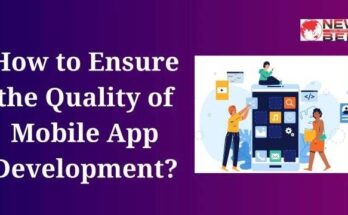Google Web Stories are a mobile-focused, visually engaging way to present and consume short-form content on the web. These stories, often presented in a slideshow format with images, videos, and text, are designed to be immersive and easy to navigate, providing a quick and captivating experience for users. Google Web Stories aim to offer a visually rich and interactive storytelling format, optimized for mobile devices, allowing creators and publishers to share content in a way that is visually appealing and easily consumable, especially on platforms like Google Search and Discover.
Table of Contents
Toggle1. What are Google Web Stories?
Google Web Stories are a mobile-focused and visually engaging way to share short-form content on the web. Designed for quick consumption, these stories consist of short, immersive slides that combine images, videos, and text to convey information in a visually appealing format. With a maximum duration of 20 seconds per slide, Web Stories are crafted to capture and maintain the audience’s attention.
Launched by Google, Web Stories are designed to be easily discoverable through search engines, making them a valuable tool for content creators, publishers, and businesses looking to enhance their online presence. They can be shared across various platforms and are optimized for performance on mobile devices, ensuring a seamless and enjoyable user experience.
Web Stories follow a mobile-first approach, catering to the increasing trend of mobile browsing. Their visually rich and interactive nature makes them suitable for a wide range of content, including news updates, tutorials, product showcases, and more. Google Web Stories can be created using the Web Stories editor or other third-party tools, allowing for creativity and customization in the storytelling process.
2. Key Features of Google Web Stories:
a. Visual Appeal:
Web Stories rely heavily on visuals. They are crafted using a combination of images, videos, and text to create an immersive experience. This visual-centric approach is aimed at capturing and maintaining user attention.
b. Swipeable Format:
The content within a Web Story is presented in a series of cards or slides. Users can navigate through these cards by swiping left or right, providing a seamless and engaging way to consume information.
c. Integration with Google:
Web Stories are integrated into Google’s search engine results. They appear in a dedicated carousel at the top of relevant search results, increasing visibility for creators.
d. Interactive Elements:
Creators can embed interactive elements within Web Stories, such as polls, quizzes, and calls-to-action. This interactivity enhances user engagement and encourages participation.
e. Mobile-First Approach:
Web Stories are designed with a mobile-first mindset, ensuring a smooth and enjoyable experience for users on smartphones and tablets. This is especially important given the increasing trend of mobile internet usage.
f. Easily Shareable:
Web Stories can be shared across various platforms, allowing creators to reach a wider audience. Social media integration and the ability to embed Stories on websites contribute to their shareability.
3. Benefits of Using Google Web Stories:
a. Enhanced User Engagement:
The visually appealing and interactive nature of Web Stories captures and retains user attention. This results in higher engagement compared to traditional text-based content.
b. Improved Visibility on Google:
Web Stories are prominently featured in Google’s search results, thanks to their integration into the search engine. This can lead to increased visibility and traffic for creators.
c. Mobile Optimization:
With the majority of internet users accessing content on mobile devices, Web Stories cater to this trend by providing a mobile-optimized format. This ensures a positive user experience across various devices.
Also, Read This: What is Digital Marketing in Hindi
d. Storytelling in Bite-Sized Chunks:
Web Stories are designed to convey information in concise and digestible chunks. This format is well-suited for audiences with shorter attention spans, allowing creators to communicate their message effectively.
e. Creative Freedom for Creators:
The format of Web Stories allows creators to experiment with a variety of multimedia elements. This creative freedom enables them to tell stories in a unique and compelling way.
4. Creating Google Web Stories:
a. Choose a Platform:
Several platforms and tools facilitate the creation of Web Stories. Creators can use the official Web Stories WordPress plugin or other third-party platforms that support the Web Stories format.
b. Crafting the Story:
The storytelling process involves deciding on a theme, creating engaging visuals, and planning the overall flow of the Story. Creators should consider the target audience and the message they want to convey.
c. Adding Multimedia Elements:
Web Stories support a variety of multimedia elements, including images, videos, and text. Creators can enhance their Stories by incorporating interactive elements like polls, quizzes, and links to other content.
d. Optimizing for Mobile:
Given the mobile-centric nature of Web Stories, creators should ensure that their content looks and functions well on smaller screens. This includes optimizing images and videos for mobile devices.
e. SEO Considerations:
While Web Stories are designed to be visually appealing, creators should also pay attention to SEO. This includes adding relevant keywords, meta descriptions, and providing alt text for images to improve discoverability.
f. Publishing and Sharing:
Once the Web Story is created, creators can publish it on their website or through platforms that support Web Stories. Sharing on social media and other channels helps increase visibility.
5. Examples of Successful Web Stories:
a. National Geographic:
National Geographic has effectively used Web Stories to showcase stunning visuals and provide bite-sized information on topics ranging from wildlife to environmental issues. The visually immersive experience aligns with the brand’s commitment to exploration and education.
b. CNN:
News organizations like CNN use Web Stories to present breaking news and feature stories in a visually compelling format. The swipeable cards enable users to quickly catch up on the latest events with engaging visuals and concise information.
c. Recipe Blogs and Cooking Sites:
Recipe blogs and cooking sites leverage Web Stories to present recipes in a step-by-step format. The visual appeal of the dishes, coupled with interactive elements like ingredient polls, enhances the overall cooking experience for users.
d. Travel and Lifestyle Bloggers:
Travel and lifestyle bloggers use Web Stories to take their audience on virtual journeys. The combination of images, videos, and interactive maps allows users to explore destinations and experiences in an engaging way.
6. Impact on Digital Storytelling:
a. Shift Towards Visual Storytelling:
The rise of Web Stories signifies a shift towards visual storytelling. As users consume more content on mobile devices, the demand for visually appealing and easily digestible narratives has increased.
b. Engagement-Driven Narratives:
Web Stories prioritize user engagement through interactive elements and a swipeable format. This encourages creators to focus on crafting narratives that not only inform but also involve the audience in the storytelling process.
c. Adaptation to Changing User Behavior:
Web Stories reflect an adaptation to changing user behavior, especially the preference for mobile-friendly and visually rich content. Creators and businesses that embrace this format align themselves with current trends in content consumption.
d. Opportunities for Diverse Industries:
The versatility of Web Stories allows them to be employed across diverse industries, from news and entertainment to education and e-commerce. Any entity looking to communicate information in a captivating manner can benefit from this format.
7. Challenges and Considerations:
a. Monetization Challenges:
While Web Stories offer engagement benefits, monetization can be challenging. Limited ad placements and the need for a comprehensive monetization strategy are aspects creators should consider.
b. Content Discoverability:
While Web Stories are featured prominently on Google, ensuring content discoverability requires optimization for search engines and the inclusion of relevant keywords.
c. Maintaining Narrative Cohesion:
The swipeable format encourages concise storytelling, but creators must also ensure that the narrative remains cohesive across cards. Balancing brevity with a comprehensive story is a key challenge.
d. Dependency on Platforms:
Creators using platforms like WordPress for Web Stories may face challenges if the platform’s support for Web Stories changes. This dependency highlights the importance of considering the long-term viability of the chosen creation platform.
8. Future Trends and Developments:
a. Evolution of Interactive Elements:
The integration of more advanced interactive elements, such as augmented reality (AR) and virtual reality (VR), could enhance the storytelling experience in Web Stories.
Also, Read This: Top 10 Most Popular Sports in India
b. Improved Analytics and Insights:
As the popularity of Web Stories grows, there is likely to be an emphasis on improving analytics and providing creators with more detailed insights into user interactions. This can help creators refine their storytelling strategies.
c. Broader Monetization Options:
Platform developers may explore additional monetization options for Web Stories, providing creators with more opportunities to generate revenue. This could include sponsored Story placements or enhanced advertising features.
d. Integration with E-Commerce:
The integration of e-commerce elements within Web Stories may become more prevalent, allowing users to make purchases directly through the Story. This could be particularly beneficial for industries such as fashion and lifestyle.
Conclusion:
In conclusion, Google Web Stories represent a dynamic and visually appealing approach to digital storytelling. Their mobile-first format, integration with Google, and interactive elements make them a valuable tool for creators across various industries. While challenges exist, the benefits of enhanced user engagement, improved visibility, and creative freedom position Web Stories as a significant trend in the evolving landscape of online content. As technology continues to advance, we can anticipate further developments and innovations in the realm of Web Stories, shaping the future of digital storytelling on the web.




